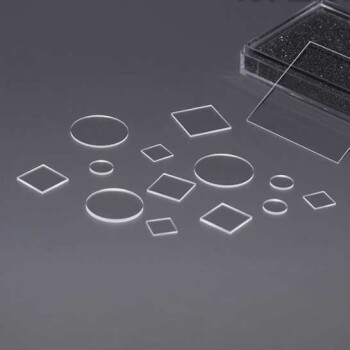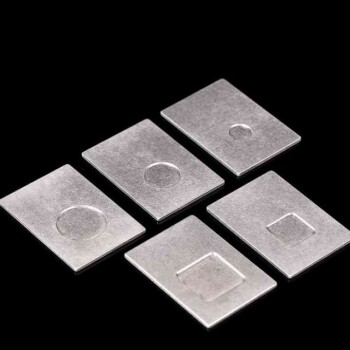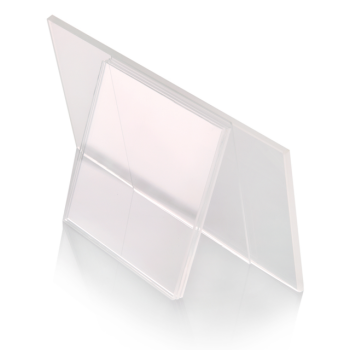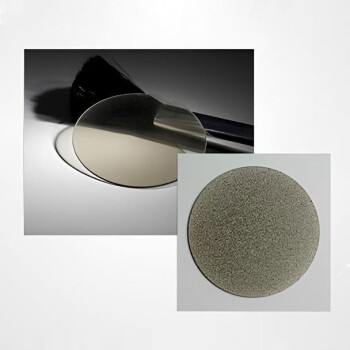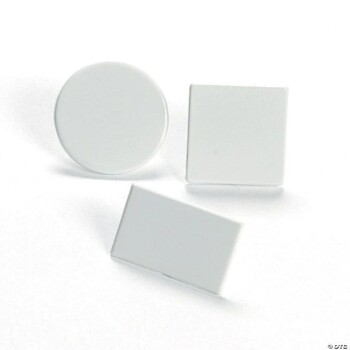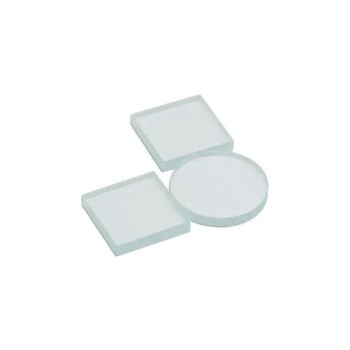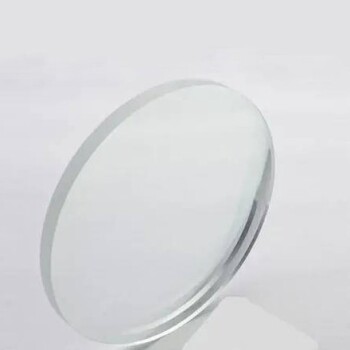熔融石英简介
定义和组成
熔融石英是一种氧化硅,因其无定形结构和高纯度而与众不同。与原子排列规则有序的结晶石英不同,熔融石英是非结晶性的,这意味着它的原子以随机、无序的方式排列。这种独特的结构是其优异特性的主要原因。
熔融石英由近乎纯净的二氧化硅(SiO₂)组成,微量杂质通常低于百万分之 50。这种高纯度对其卓越的热学、光学和机械性能至关重要。由于不含大量杂质,熔融石英在各种温度和环境下都能保持稳定,因此成为各种高科技应用的首选材料。
熔融石英的制造过程包括在极高的温度下熔化高纯度石英或天然硅砂,温度通常在 1700 至 2000 摄氏度之间。这种熔化过程消除了任何结晶结构,形成玻璃状的均匀材料。熔化后,材料迅速冷却以保持其无定形状态,从而确保最终产品保持其独特的性能。
总之,熔融石英的成分和制造工艺不仅决定了其物理和化学特性,还突出了其在先进技术应用中的多功能性和重要性。
与传统玻璃的区别
熔融石英与传统玻璃的区别主要在于其纯度和不含其他成分。传统玻璃通常含有各种添加剂,以增强特定性能或方便制造工艺,而熔融石英几乎完全由二氧化硅(SiO₂)制成。这种高纯度是其卓越的热学和光学特性的基石。
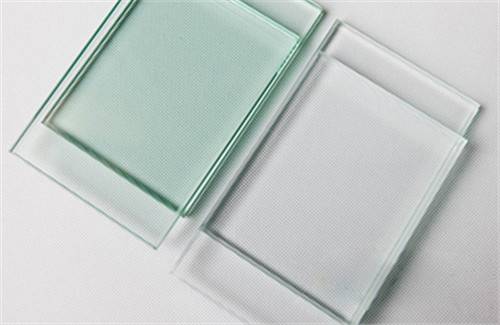
在热特性方面,熔融石英具有极低的热膨胀系数,这意味着它在温度变化时的膨胀和收缩非常小。这使得它在从低温到极热的各种温度范围内都非常稳定。另一方面,传统玻璃的热膨胀系数通常较高,因此在极端条件下更容易受到热应力的影响,并可能发生故障。
从光学角度来看,熔融石英以其在紫外线(UV)、可见光和红外线(IR)光谱范围内的透明度而闻名。这种广泛的透明度是其高纯度和不含可能散射或吸收光线的杂质的直接结果。传统玻璃,即使是高质量的光学玻璃,通常也含有限制其对特定波长(尤其是紫外线和红外线范围)的透明度的元素。
下表重点介绍了熔融石英与传统玻璃的一些主要区别:
| 特性 | 熔融石英 | 传统玻璃 |
|---|---|---|
| 成分 | 几乎完全由 SiO₂ 组成 | 含有各种添加剂 |
| 热膨胀系数 | 极低 | 较高 |
| 透明度 | 紫外线至红外线范围广 | 受添加剂限制 |
| 耐化学性 | 高抗化学性 | 因成分而异 |
| 电气绝缘性 | 优异 | 可变 |
这些特点使熔融石英成为需要高热稳定性和广谱光学透明度的应用领域(如航空航天、半导体和光学行业)的理想材料。
熔融石英的特性
化学特性
熔融石英以其优异的化学惰性和高纯度而闻名,这两点共同赋予了它对各种化学物质的卓越耐受性。在实验室、工业环境和高科技制造工艺等不可避免接触化学品的环境中,这一特性尤为重要。尽管熔融石英具有普遍的耐受性,但它也并非不受所有物质的影响。它明显易受氢氧化钾和氢氟酸的影响,长期接触会降低其结构完整性。
下表着重说明了熔融石英与其他材料相比的耐化学性:
| 化学化合物 | 熔融石英耐化学性 | 传统玻璃耐化学性 |
|---|---|---|
| 氢氧化钾 | 易受 | 易受影响 |
| 氢氟酸 | 易受影响 | 易受影响 |
| 硫酸 | 耐 | 耐 |
| 盐酸 | 耐 | 耐 |
| 氢氧化钠 | 耐 | 耐 |
上述比较分析强调了熔融石英独特的化学稳定性,使其成为化学稳定性要求极高的应用中的首选材料。不过,由于熔融石英易受某些化学物质的影响,因此在这些物质普遍存在的情况下,必须小心处理并采取适当的保护措施。
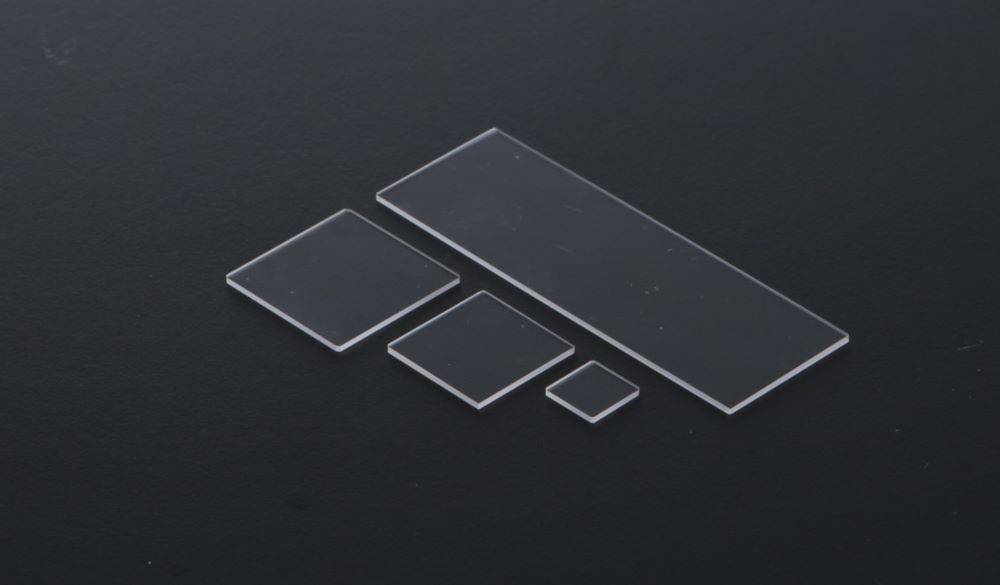
电气性能
熔融石英以其优异的电绝缘性能而闻名,具有超高电阻的特点。这一特性使其特别适合需要高频性能的应用。在传统材料可能失效的环境中,这种材料在不同条件下保持电气绝缘的能力至关重要。
例如,在电子和电信领域,熔融石英经常被用于制造微波和毫米波频率的元件。它的高电阻可确保将信号损失降至最低,这对于保持高频传输的完整性和效率至关重要。
| 特性 | 价值 | 影响 |
|---|---|---|
| 电绝缘 | 高电阻 | 最大限度地减少高频应用中的信号损失 |
| 频率范围 | 微波到毫米波 | 适用于先进的电信和电子设备 |
| 稳定性 | 在压力下保持绝缘 | 确保在苛刻环境中的可靠性能 |
除了用于高频应用外,熔融石英的电气特性也使其适用于高温环境。熔融石英在承受极端温度的同时还能对电气元件进行绝缘,因此在航空航天和半导体制造等行业中是一种非常宝贵的材料。
机械性能
熔融石英以其优异的机械性能而闻名,这使其有别于其他材料,尤其是在微型设备领域。其固有的柔韧性使其能够承受应力和变形而不会开裂,是耐用性要求极高的应用领域的绝佳选择。除了这种灵活性之外,熔融石英还具有令人印象深刻的强度,使其能够承受巨大的机械负荷而不影响结构的完整性。
此外,熔融石英还具有出色的抗压性。在材料承受高压的环境中,例如在微流控设备或高压力机械部件中,这一特性至关重要。熔融石英集柔韧性、强度和抗压性于一身,是制造微器件的理想材料,因为微器件对精度和可靠性要求极高。
总之,熔融石英的机械特性--柔韧性、强度和抗压性--共同使其适用于各种微器件应用,确保其性能和使用寿命。
光学特性
熔融石英以其在紫外线(UV)到红外线(IR)光谱范围内的超高透明度而闻名,这一特性大大提高了其在各种光学应用中的适用性。这种透明度不仅仅是程度问题,而是熔融石英在光学领域有别于其他材料的基本特性。
熔融石英的光学清晰度在其不同波长的性能上表现得尤为明显。例如,在紫外线范围内,熔融石英能透过低至 160 纳米的光线,这使它成为紫外线激光器和光刻技术等应用中不可或缺的材料。在红外光谱中,它的透射率超过 3.5 µm,这对光纤、红外光谱仪和热成像系统至关重要。

此外,熔融石英还具有低光色散和高折射率的特点,可确保将信号损失和失真降至最低。这些特性使熔融石英成为透镜、棱镜和波导等光学元件的理想材料,因为在这些光学元件中,精度和效率是最重要的。
此外,熔融石英的机械和热稳定性也进一步支持了它在光学应用中的使用。熔融石英的抗热震性和抗机械应力性确保其制成的光学元件在高温环境或温度急剧变化的不同条件下都能保持完整性和性能。
总之,熔融石英具有宽光谱透明度、低色散和高折射率等光学特性,加上其机械和热稳定性,使其成为先进光学技术的主要材料。
热性能
熔融石英以其优异的热稳定性而闻名,这主要归功于其低而稳定的热膨胀系数。这一特性确保熔融石英在从低温到极热的广泛温度范围内保持稳定。与热膨胀系数较高的材料不同,熔融石英在不同温度下不会出现明显的尺寸变化或机械应力,因此非常适合需要热耐久性的应用。
熔融石英的高导热性和低抗热震性进一步增强了其热稳定性。这些特性共同使熔融石英能够承受快速的温度波动,而不会发生开裂或变形。这使得熔融石英成为高温环境(如半导体工业和航空航天应用中的高温环境)的绝佳选择,在这些环境中,材料必须在不影响性能的情况下承受极端条件。
此外,熔融石英的热膨胀系数低,因此可以在先进的光学系统和电子元件中实现精确的热管理。在这些应用中,在不同的热条件下保持尺寸一致性对于确保最佳性能和使用寿命至关重要。这些热性能的结合使熔融石英成为一系列高温和热敏感应用的理想材料。
熔融石英的应用
太空探索
熔融石英在太空探索领域有着重要的应用,尤其是在建造航天器窗口和深潜器方面。熔融石英具有无与伦比的强度,是承受这些环境中极端条件的理想材料。
在航天器窗户中,熔融石英具有很强的抗机械应力和抗热冲击能力,即使在执行太空任务时经历巨大的压力和温度波动,也能确保窗户的完整性。这种材料在紫外至红外光谱范围内保持透明度的能力进一步提高了其实用性,使观测和数据收集更加清晰,不会出现失真现象。
同样,在深潜器中,熔融石英的超强耐久性也至关重要。这种材料可以承受深海中巨大的静水压力,确保船只观察窗的安全性和功能性。此外,这种材料还具有抗化学腐蚀的能力,这在恶劣的海洋环境中至关重要。
熔融石英在这些应用中的使用凸显了其多功能性和坚固性,使其成为推动太空和水下探测技术发展的基石材料。
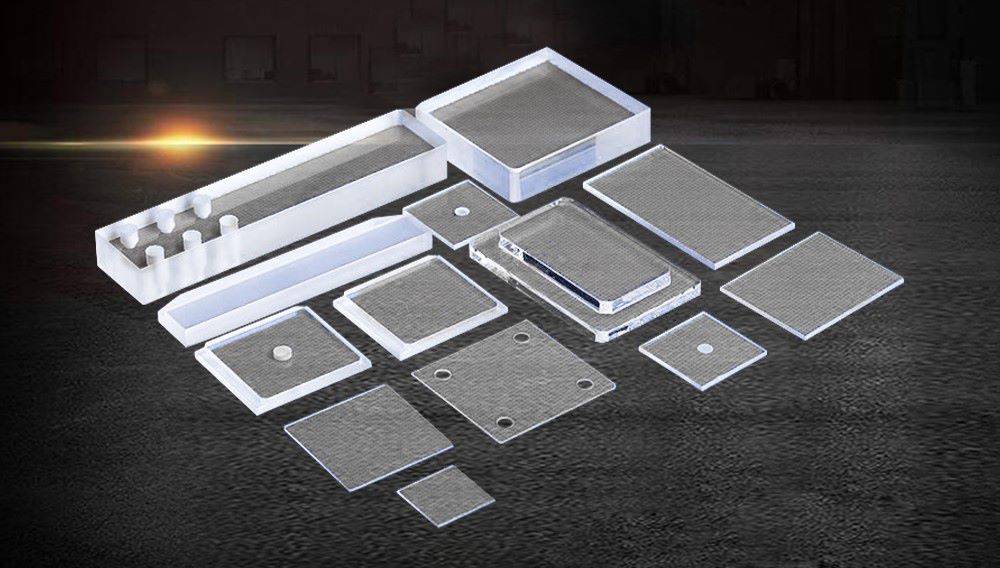
化学和医疗精密玻璃
熔融石英具有优异的抗化学和热损伤能力,是化学和医疗领域精密玻璃器皿的理想材料。这种材料的化学惰性确保它不受大多数化学物质的影响,氢氧化钾和氢氟酸除外。这一特性使熔融石英成为处理侵蚀性化学物质的容器和仪器的最佳选择,而不会影响其结构的完整性。
在医疗领域,熔融石英的热稳定性尤其具有优势。熔融石英的热膨胀系数低,因此能在很宽的温度范围内保持尺寸稳定,适用于涉及高温灭菌过程的应用。对于需要反复暴露在极端温度下而不发生降解的医疗器械来说,这一特性至关重要。
此外,熔融石英的高纯度和光学透明度也有利于医疗诊断和研究。例如,它可用于制造医疗设备中的精密透镜和光学元件,确保成像清晰准确。熔融石英能够透过从紫外线到红外线的光谱,这使它成为激光手术和光学相干断层扫描等各种医疗应用中的重要材料。
总之,熔融石英兼具耐化学性、热稳定性和光学特性,是化学和医疗领域精密玻璃器皿的上佳材料。它的独特属性不仅提高了仪器的耐用性和可靠性,还有助于提高关键应用的性能和精确度。
电子和高温应用
熔融石英因其卓越的热稳定性和绝缘性能而广泛应用于电子行业。在元件承受极端温度的环境中,熔融石英是确保电子设备寿命和性能的关键材料。熔融石英的热膨胀系数低,即使在温度大幅波动的情况下也能保持尺寸稳定,因此是在高温条件下工作的绝缘元件的理想选择。
此外,熔融石英还具有无与伦比的电绝缘性能,可提供对高频应用至关重要的高电阻。因此,在设计先进的电子系统时,保持信号完整性和防止电气短路是不可或缺的。这种材料能够承受高温而不影响其绝缘能力,进一步增强了其在这些应用中的实用性。
总之,熔融石英独特的热性能和电性能组合使其成为电子产品中不可或缺的材料,尤其是在对高温稳定性有严格要求的情况下。它的使用确保了电子元件在苛刻环境中的可靠性和耐用性,突出了其在现代技术进步中的重要性。
光学和激光技术
熔融石英在光学和激光技术领域发挥着举足轻重的作用,这主要归功于其卓越的光学特性。从紫外线(UV)到红外线(IR)光谱的高透明度使其成为各种光学元件的理想材料。这种透明度可确保在高精度应用中将信号损失降到最低,并实现卓越的性能。
在激光光学领域,熔融石英用于制造透镜、反射镜和波导。这些部件对于保持激光光束的一致性和效率至关重要。这种材料的低色散特性进一步提高了其在高功率激光系统中的适用性,在这种系统中,保持光束质量是至关重要的。
此外,熔融石英的机械和热稳定性使其能够承受激光技术中经常遇到的苛刻条件。熔融石英的热膨胀系数低,可确保光学元件在不同温度下保持尺寸稳定,降低变形和错位的风险。
| 特性 | 在光学和激光技术中的优势 |
|---|---|
| 高透明度 | 最大限度地减少信号损失,提高性能 |
| 低色散 | 在高功率系统中保持光束质量 |
| 机械稳定性 | 抗压并保持形状 |
| 热稳定性 | 确保在不同温度下的尺寸稳定性 |
这些特性共同使熔融石英成为开发和运行先进光学和激光系统不可或缺的材料。
半导体工业
熔融石英因其卓越的纯度而在半导体行业受到高度重视,这对制造高性能电子元件至关重要。熔融石英的纯度可确保将污染降至最低,从而提高半导体器件的可靠性和效率。这种材料可用于半导体制造工艺中的各种关键应用,包括用作光掩膜的基板和化学气相沉积反应器的组件。
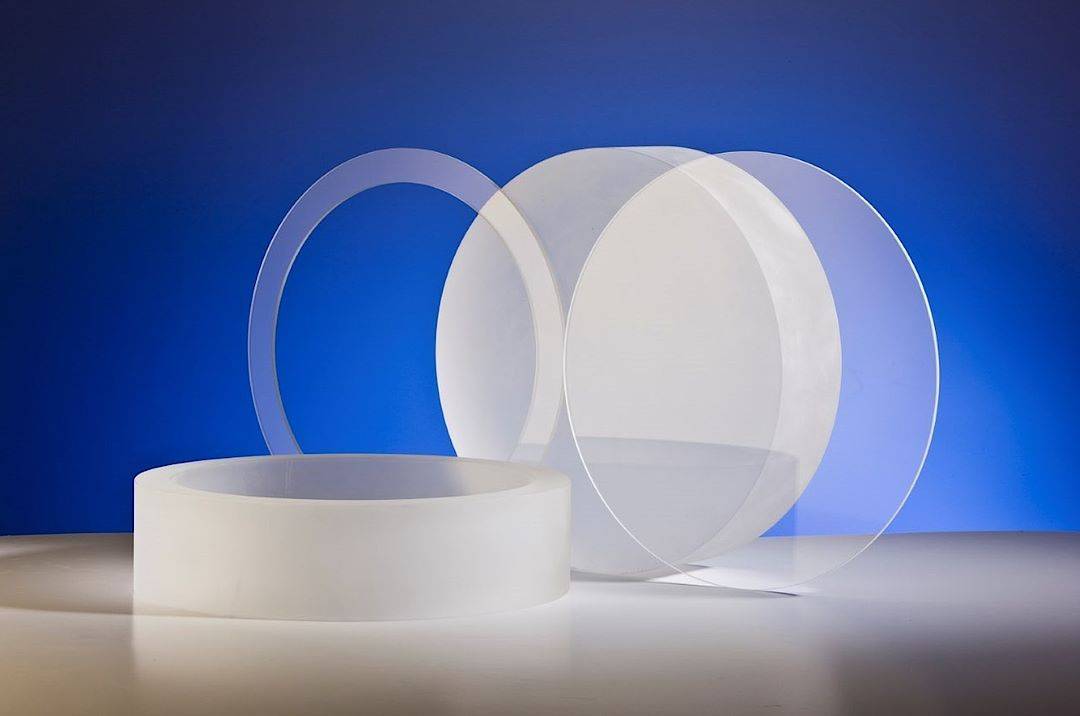
在光掩膜方面,熔融石英是一种稳定而透明的基底材料,可用于半导体层的精确图案化。它在紫外至红外光谱范围内的高透明度对光刻技术尤其有利,而光刻技术是半导体制造中需要高分辨率成像的关键工艺。此外,熔融石英的热膨胀系数低,可确保这些掩膜的尺寸在不同温度下保持一致,这对于保持转移到半导体晶片上的图案的准确性至关重要。
此外,在化学气相沉积(CVD)反应器中,熔融石英因其出色的热稳定性和耐腐蚀性而被广泛使用。这些特性使熔融石英能够承受高温工艺的苛刻条件,成为制造半导体元件(如晶片和集成电路)的理想材料。熔融石英的化学惰性、电绝缘性能和机械强度使其成为半导体行业不可或缺的多功能材料。
紫外线卫生
熔融石英被广泛应用于紫外线(UV)卫生设备中,这主要是因为它具有优异的耐热性和耐辐射性。这种材料的固有特性使其成为高温和强辐射环境的理想选择。例如,在紫外线消毒系统中,熔融石英元件可以承受严酷的条件而不发生降解,从而确保消毒过程的长期有效性。
熔融石英之所以能在如此极端的条件下经久耐用,是其独特的化学和热性能的直接结果。与传统材料不同,熔融石英不会受到热应力或辐射损伤的影响,而这些都是紫外线应用中常见的问题。这使它成为关键卫生应用中可靠和可持续的选择,在这些应用中,材料的完整性对保持无菌条件至关重要。
此外,熔融石英在整个紫外线光谱范围内的透明度进一步增强了其在紫外线卫生应用中的实用性。这种透明度使紫外线得以有效传输,而紫外线对灭菌过程至关重要。因此,紫外线设备中的熔融石英部件不仅能承受恶劣的操作条件,还能提高卫生系统的整体效率和效果。


